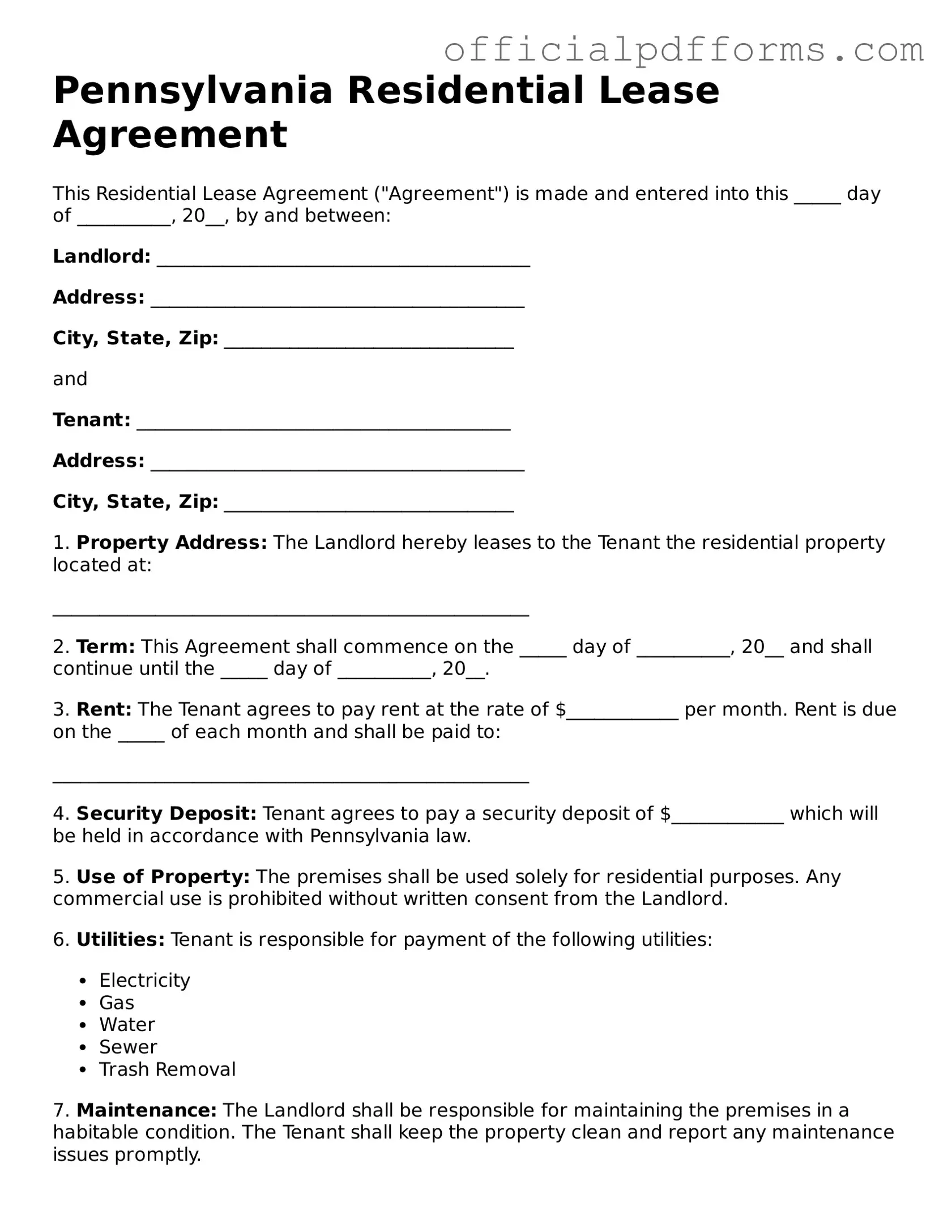What is a Pennsylvania Residential Lease Agreement?
A Pennsylvania Residential Lease Agreement is a legal document that outlines the terms and conditions under which a landlord rents property to a tenant. This agreement typically includes details such as the rental amount, duration of the lease, responsibilities of both parties, and rules regarding the property. It serves to protect the rights of both landlords and tenants by clearly defining expectations.
What should be included in a Residential Lease Agreement?
A comprehensive Residential Lease Agreement should include the following key elements:
-
Names of the Parties:
Full names of the landlord and tenant.
-
Property Description:
Address and description of the rental property.
-
Lease Term:
Start and end dates of the lease.
-
Rent Payment:
Amount of rent, due date, and acceptable payment methods.
-
Security Deposit:
Amount required and terms for its return.
-
Maintenance Responsibilities:
Duties of both landlord and tenant regarding property upkeep.
-
Rules and Regulations:
Any specific rules that tenants must follow.
How long is a typical lease term?
Lease terms can vary widely. The most common duration for a residential lease is one year, but they can also be month-to-month or longer, such as two years. Shorter leases may offer flexibility, while longer leases provide stability for both parties.
Can a landlord raise the rent during the lease term?
Generally, landlords cannot raise the rent during the lease term unless the lease explicitly allows for it. Rent increases typically take effect only when a new lease is signed or at the end of the current lease period. Tenants should review their lease agreement for any specific clauses regarding rent adjustments.
What happens if a tenant wants to break the lease early?
If a tenant needs to break the lease before its expiration, they may be subject to penalties. The lease agreement should specify the consequences, which could include losing the security deposit or paying rent until a new tenant is found. It’s advisable for tenants to communicate with their landlord to explore options, as some landlords may be willing to negotiate.
Are verbal agreements enforceable in Pennsylvania?
While verbal agreements can be legally binding, they are difficult to enforce due to the lack of written evidence. A written Residential Lease Agreement is highly recommended as it provides clear documentation of the terms and protects both parties in case of disputes.
What rights do tenants have under Pennsylvania law?
Tenants in Pennsylvania have several important rights, including the right to a habitable living environment, protection against unlawful eviction, and the right to privacy. Landlords must provide proper notice before entering a rental property, typically 24 hours. Understanding these rights can help tenants advocate for themselves effectively.
How can disputes be resolved between landlords and tenants?
Disputes can often be resolved through open communication and negotiation. If that fails, mediation is a useful option, allowing both parties to discuss their issues with a neutral third party. If necessary, legal action may be taken, but it is usually seen as a last resort. Many local organizations also offer resources and support for resolving landlord-tenant disputes.
